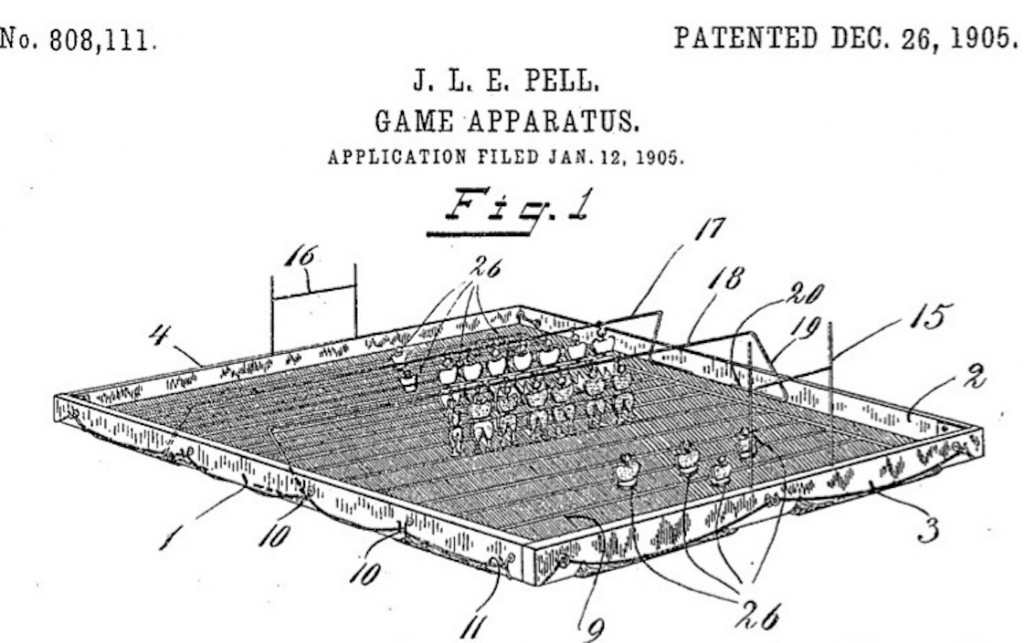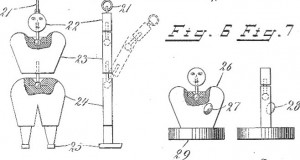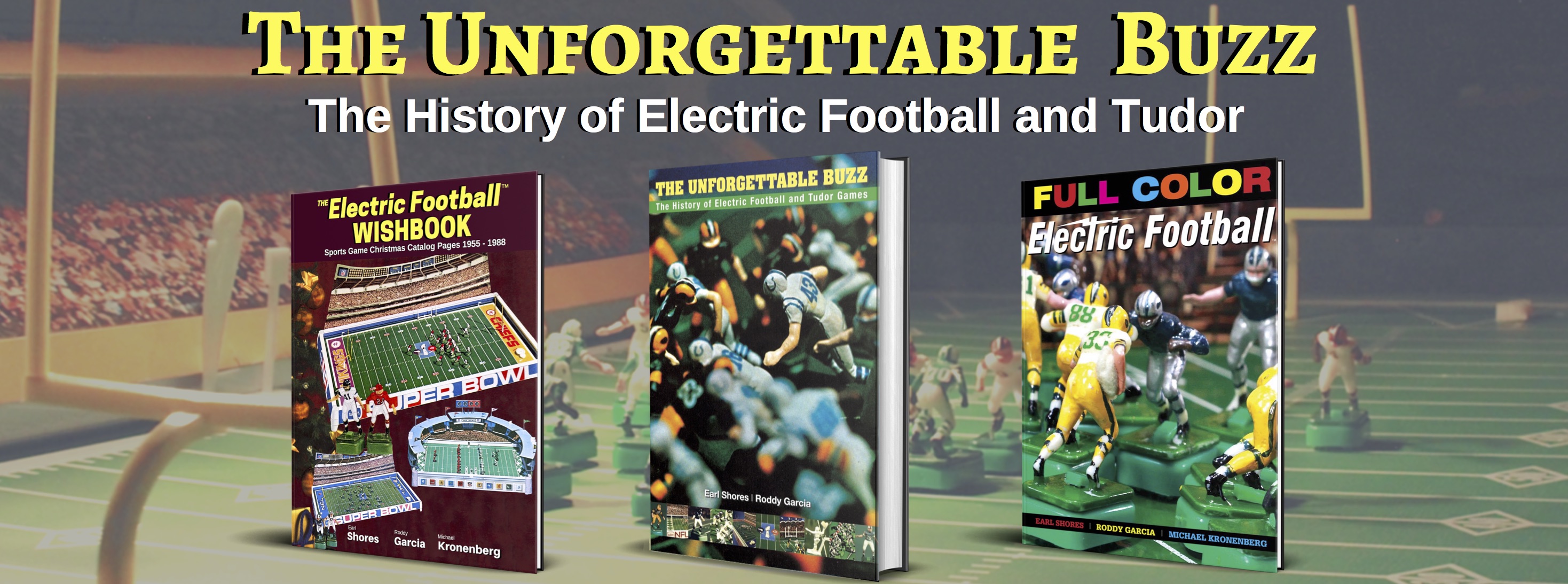 Having football players “run” on a game board was something toy makers and inventors had dreamed about long before Norman Sas took over Tudor in 1948 and invented Electric Football.
Having football players “run” on a game board was something toy makers and inventors had dreamed about long before Norman Sas took over Tudor in 1948 and invented Electric Football.
So one of our goals in researching and writing The Unforgettable Buzz was to find other football games that tried to incorporate moving players. Thanks to the help of the U.S. Patent Office we were able to go all the way back to 1905, finding what we believe is the earliest officially documented attempt to create an “action” football game.
Inventor John L.E. Pell had to be thinking about his game much sooner than 1905 because a patent application has never been a simple thing to throw together. And Mr. Pell’s “Game Apparatus” was far from a simple thing, consisting of a cloth game board with five-yard markings, goal posts, and a foldable frame. There were also 22 players, including the game’s most unique feature – a scrimmage line of “hanging” wooden players.
 Two moveable wires ran across and above the field (one for each team), and from these wires hung a scrimmage line consisting of seven offensive and defensive linemen. These players were hinged at the waist, and could swing back and forth creating their own type of “action.” In addition to the linemen, each team had four “backs,” which were actually half-players (torso only) mounted on round wooden bases.
Two moveable wires ran across and above the field (one for each team), and from these wires hung a scrimmage line consisting of seven offensive and defensive linemen. These players were hinged at the waist, and could swing back and forth creating their own type of “action.” In addition to the linemen, each team had four “backs,” which were actually half-players (torso only) mounted on round wooden bases.
A “play” consisted of flicking the player (back) with ball, sliding him through or around the hanging scrimmage line. The player on defense could position his backs strategically in the gaps between the scrimmage line players, or put them out wide to cover the areas outside the static-hanging players.
The play ended when the flicked ball carrier stopped moving or ran into an opposing player. There was no need for a passing game because when Mr. Pell conceived his game the flying wedge was still legal…and the forward pass wasn’t. In fact, Mr. Pell included instructions for flicking multiple backs at the line of scrimmage for a “line-bucking” play.
So long before electric football, people were dreaming of having a foot-ball game (Mr. Pell’s 1905 spelling) where the players could run on their own. Of all the people who dreamed and tried, it was Norman Sas who made it happen.
Earl
